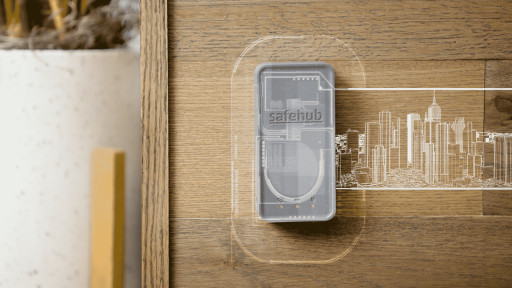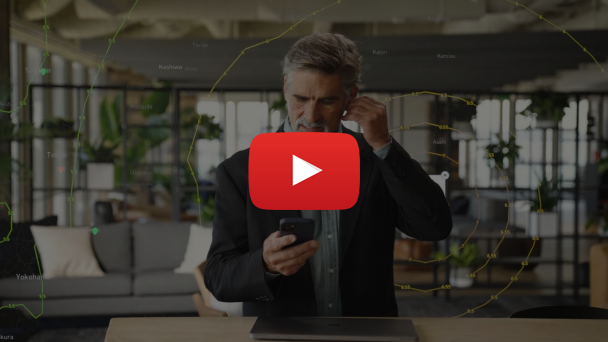SAN FRANCISCO, Oct. 27, 2022 (GLOBE NEWSWIRE) -- Late Tuesday morning, a 5.1 magnitude earthquake occurred near San Jose, California, that could be felt by many. For businesses and organizations, major earthquakes pose complex questions that need immediate answers to ensure employee safety and resume business operations.
Safehub, a technology company that produces scalable, IoT building-specific sensors, recently hosted a webinar entitled "Can Building Shaking Sensors Prevent Future Tragedies?" that discussed how the lack of information has caused tragic losses after past earthquakes, and how we can reduce future uncertainty in estimating building vulnerability. Included in the presentation, were guest speakers from the Global Earthquake Model (GEM) Foundation, a global public-private partnership organization that is improving the state of practice of earthquake hazard and risk assessment through the development of open global databases, models and tools, and improving stakeholder capacity for risk assessment, providing the public with data on earthquake hazard and risk around the world.
For earthquakes like Tuesday's, most organizations traditionally rely on public data, seismic maps calculated from the earthquake's magnitude and the distance from it, to make their own business continuity decisions. If an earthquake is significant enough or some physical damage can be seen, structural engineers may be called in to do visual inspections as well. The damage estimates are not exact, but it was the best information organizations had about structural integrity — until now.
Building IoT Sensors Can Reduce Damage Error Estimates by 60%
According to GEM's Seismic Risk Coordinator Vitor Silva, organizations have been relying on earthquake magnitude and distance from the epicenter as one of the main data sources for post-earthquake decision-making for far too long. Now, thanks to new building-specific sensor solutions that can provide sensor and elongation data about damage to buildings that could not otherwise be detected, we can make more informed decisions.
Following destructive events, ground shaking or dynamic data provided by sensors can significantly reduce the bias and estimation of error by more than 60 percent. In fact, recent studies covering building damage from Spain show that, in some instances, minor damage cannot be detected in buildings without sensors. For building portfolios, the integration of sensors, like Safehub's, in even a few buildings can dramatically improve the ability to assess potential losses.
Silva provided illustrations of massive losses that have been incurred across the globe from past earthquake events. One important example near Christchurch, New Zealand, demonstrated how, even after a post-earthquake inspection, a building still collapsed and more than 100 people that reoccupied it were killed.
Silva points out that there may have been some damage to the building that could not have been visible during the inspection. For example, some structural damage could be hidden behind non-structural elements. Sensor data indicating clear changes in the dynamic properties of the building could possibly have supported engineers and decision-makers about whether a more detailed inspection of the building was required.
Safehub's Mission: Reducing Error & Increasing Safety After Earthquakes
After Tuesday's earthquake, Safehub's current clients received alerts, analytics, and damage estimates within minutes of the event, most of which received it before any public alerts. These types of alerts and building-specific data enable its clients, including Fortune 100 companies, Top 100 REITs, government buildings, hospitals, and educational institutes, to reduce potential error in decision-making following earthquakes, increasing safety and decreasing business interruption.
"Today's earthquake definitely triggered some questions from my team, so the notifications were timely & helpful to reassure everyone," stated a Safehub client shortly after the shake.
Safehub's mission is to help make the world safer and more resilient from natural disasters by connecting building-specific risk information with portfolio-level decision-making. That means connecting the risk and damage of the building at the asset level and aggregating that at a portfolio level — so that critical decisions around safety, crisis management, business continuity, and even insurance can be made.
To learn more about Safehub's catastrophe risk management solution, visit www.safehub.io.
Contact Information:
Donna Smith
Director of Marketing
donna.smith@safehub.io
5852331129
Taka Yokoyama
VP of Operations
taka.yokoyama@safehub.io
Andy Thompson
Co-Founder & CEO
andy@safehub.io
Related Images

Image 1: Safehub Sensor
Scalable sensor & IoT solution, providing building-specific damage estimates after an earthquake.
This content was issued through the press release distribution service at Newswire.com.
Attachment

